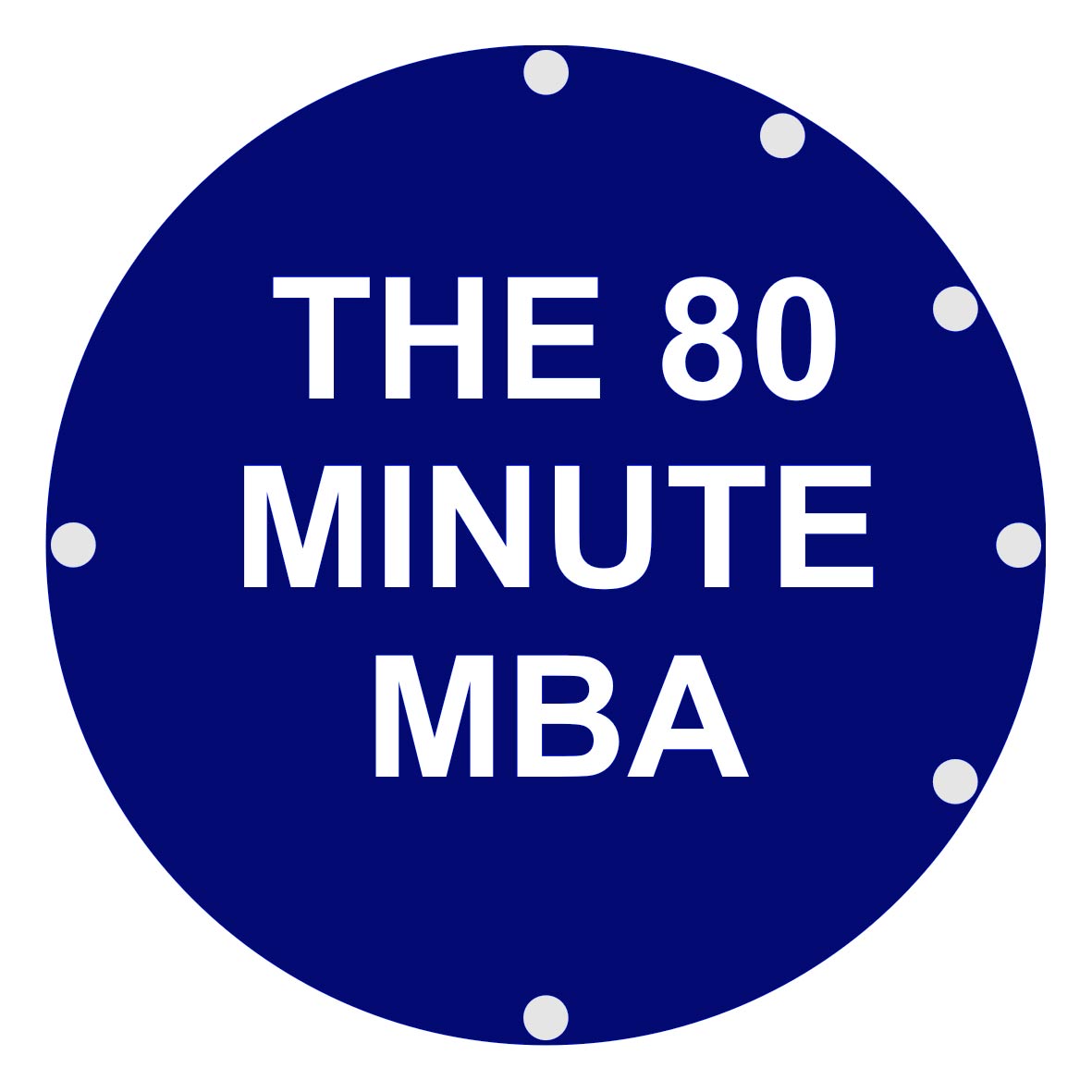 A concise summary of key lessons and concepts from Reeves and Knell’s Book, with pages numbers. Reviewed by Gil Dekel, PhD.
A concise summary of key lessons and concepts from Reeves and Knell’s Book, with pages numbers. Reviewed by Gil Dekel, PhD.
page 48
There is no evidence that charismatic leaders are more successful than non-charismatic ones. We all have our talents, and things that we are not good at. To balance your skills and limits, find someone else who can do what you cannot do.
61
Successful people know what they are good at, and what they cannot do. They are humble, and so they will be happy to hire talented individuals.
63
Successful leaders are motivated by what they build, rather than what they get. They build great teams, and that motivates them.
Harry Truman: ‘You can accomplish anything in life, provided you do not mind who gets the credit.’
72
Intangible Assets – non-monetary assets that cannot be seen, touched or measured, such as intellectual properties, innovation and knowledge. These assets are generated by people.
Intangible assets are estimated to account for up to 80% of the value of large companies today. Thus, people contribute to businesses more than any other factor of production.
78-79
Jack Welch ‘4 Es of Leadership’:
– Positive Energy – have enthusiasm at work
– Energize others – inspire people at work
– Edge – the courage to make tough decisions
– Execute – get the job done.
79
Some people can ‘drain’ away your energy, leaving you exhausted. These are ‘drainers’. Other people can energize you, giving you strength. These are ‘radiators’.
87
Accounting – economic information.
89
The double entry accounting system records the effect of each transaction as debits and credits. There are left hand side and right hand side in an entry.
Left hand side – debit. Right hand side – credit. The total debits must equal total credits.
90
Debit – what comes in (for example, a new PC you bought for your business).
Credit – what goes out (£800 you paid for that PC).
The words ‘credit’ and ‘debit’ have specific meaning in accounting, different from their use in everyday language. So, ‘debit’ in accounting means what comes in, and ‘credit’ means what goes out.
Each party in business receives something and gives something, hence one side in the double entry describes the debit (what you got), and the other side describes the credit (what you gave).
91
T Shape Account model:
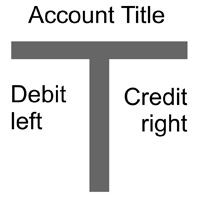
T Shape Accont Model
A good way to remember this is to think of AC/DC:
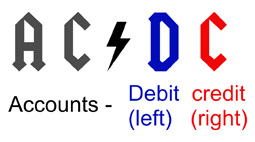
93
Total debit must equal total credits.
Example of book keeping entry after a £800 PC was bought:
| Debit | Credit | |
| Equipment | £800 | £0 |
| Cash | £0 | £800 |
94
Assets = liabilities + capital.
Assets are the economic resources of a business, such as property, machinery, debts that are owed to the company, and cash in the bank.
Liabilities are costs, expenses, money borrowed.
Capital – funds invested in the business by the owner, and any profits that are left in the business for use.
95
A balance sheet documents the accountings of a business, at a particular point.
96
A balance sheet at end of period 1:
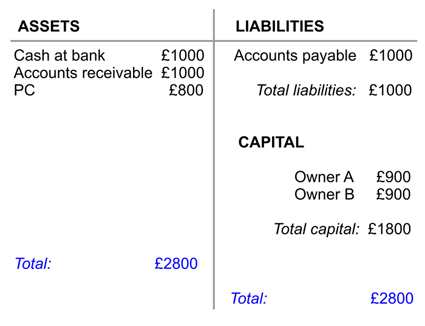
Balance Sheet
98-99
Financial Accounting Glossary:
Assets – something that a company owns, and which has future economic value (land, building, equipments, goodwill).
Liability – something that a company owes to someone else (money, service the company provides, products the company produces).
Revenues – the sum amount received or to be received from customers for sales.
Capital (‘owner equity’) – funds invested in the business by the owner, and what is left of the assets after liabilities deduced
Profit – revenue less costs.
Profit and loss account – a summary of a business trading transactions (income, sales and expenditures), and the resulting profit or lost, for a given period.
Balance sheet – a financial snapshot at a given point, listing the assets and liabilities of a company.
Balance sheet shows:
– fixed assets – long term possessions
– current assets – short term possessions
– current liabilities – what the business owes and need to pay back in the short term
– long term liabilities – the owner’s or shareholder’s capital.
The balance sheet is called so because it is a sheet showing a balance of the debit entry and the credit entry. There must be a balance.
Balance sheet indicates:
– how solvent a business is
– how liquid the assets are
– how much is available in cash, or can be easily converted into cash
– how the business is financed
– how much capital is being used.
99-100
Supply chain management is a concept asserting the use of technology to enable end-customers’ requirements to be delivered directly to suppliers. Supermarkets and car manufacturers are example businesses operating as supply chain management. The affordable IT creates a close cooperation between the suppliers and their key customers.
101
Demand – how much people want something, measured in terms of how much they will pay for it. How much of it people will buy at certain price.
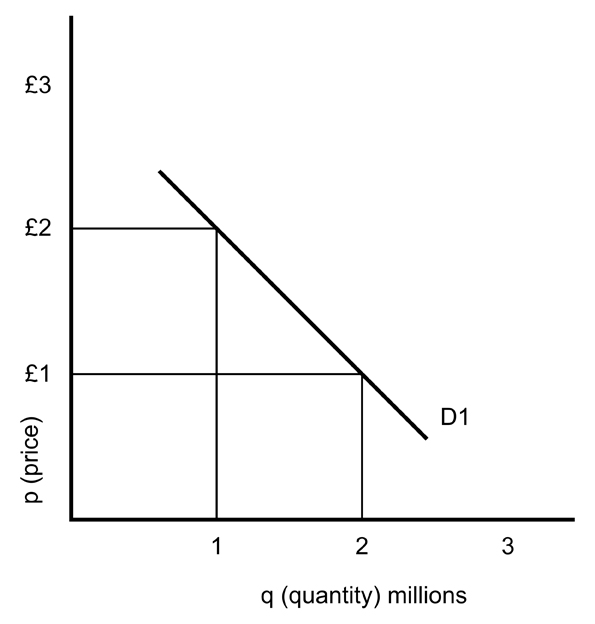
Demand Curve
At price £1 per unit, customers will buy total 2 million units. At price £2, customers will buy 1 million units.
102
The supply has an effect on the price. The supply’s effect on price – how much the manufacturer can charge per item, to cover costs and generate profit for the shareholders. Supply curve shows how many items of the product will be supplied at any given price.
103-104
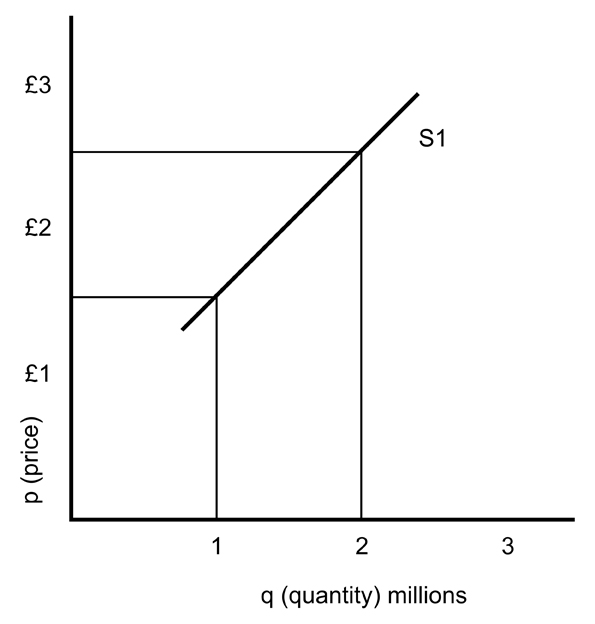
Supply Curve
The company will supply 1 million items at a price of £1.50 per unit, and 2 million items will be supplied if the price per unit is £2.50.
Once demand and supply curves for a product are estimated, an equilibrium point is estimated between them, giving an estimate of how many items (supply) can be sold at what price (demand). In this example: 1.25 million units will be sold at a price of £1.75.
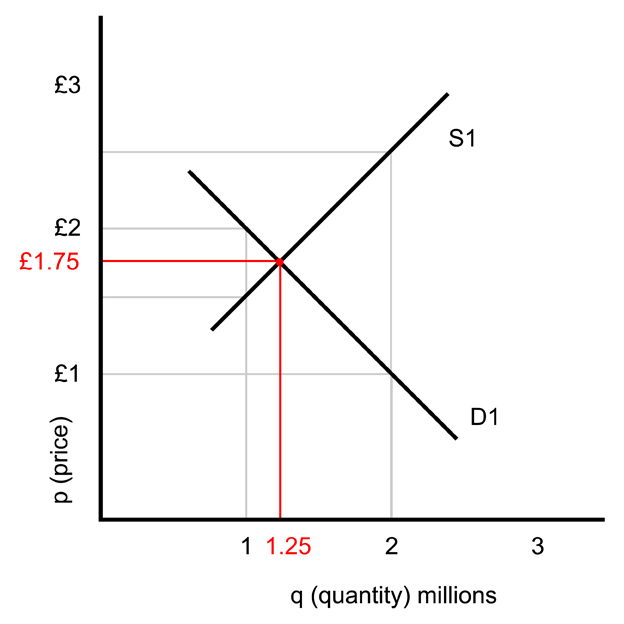
Equilibrium Point
It needs to be said that these models operate on estimations. Also, the price does not always reflect the value of a product/service. For example, gold is very expensive, and water is cheap, but which is more valuable?
107
Marketers (as defined by Harvard Business School) learn what the customers need, help develop products, create awareness, and communicate benefits.
108
With the opportunities of watch-on-demand via TV boxes and online players, people see fewer advertisements on the programmes they watch. The model of promoting is changing.
109
Online Social networking, such as Facebook, Linkedin and Bebo, allow customers to contribute as well as receive information. Individual people can now share content, ideas, interests and recommend on brands. There is no longer a ‘passive consumer’.
110
Marketing moves away from the 30-second-ad slot, to staging conversations with customers in online social media. Conversations are very creative and useful act. Theodore Zeldin: when minds meet they do not just exchange facts, but transform and reshape facts, creating new ones.
111
The Four Ps Marketing Mix model – Product, Price, Place, Promotions. Product/price are product related elements. Place/Promotion are delivery system, whereby a product is delivered to a place or a message is delivered to clients.
112
The Four Ps model in now replaced with the new Four Cs model –
– Community
– Co-creation
– Customisation
– Conversation.
Community:
A move from just engaging individual customers via TV ads, to engaging whole communities via online interactions.
116
Co-creation:
In enhanced word-of-mouth marketing, consumers who favour a product would blog, review, and support the product. Companies seek more than just supportive consumers. They seek to engage in conversations so to transform the consumers to co-creator, in a way that consumers will help suggest ideas and create the next products that they themselves want to see and buy. Consumers as producers or co-creators.
123
Customers are getting more involved and can help design, develop and distribute products. This also helps companies anticipate how customers will respond to new products. Customers are involved in the creating of the new products, and sometimes they create new markets.
The first mountain-bikes were built in the garages of some enthusiastic riders in California in early 1970’s. These people created the market, to which commercial bike manufacturers responded by starting to mass manufacture mountain bikes.
119
Customisation:
The personalisation of products or services is now possible and available to all people online, not just to the wealthy as used to be the case before. And it is now available at reduced price which is still profitable, whereas traditionally customisation was profitable only for mass-production.
121-122
There is a move into more varieties of products and niches, than the hit-product sells. Selling small volumes of hard-to-find items to many customers, rather than selling large volumes of few hit products. Amazon is said to make the largest part of the profit from selling obscure books. A smaller part of the profit comes from sales of mainstream hit books.
This is possible thanks to technology that allows people easier online search of items.
126
Conversation –
As the model moves towards Community, Co-creation and Customisation, consumers are taking more critical marketing decisions than the marketing departments of businesses themselves. Thus, marketing agendas of companies must become rooted in a dialogue with consumers, with partnership, and a lesser ‘controlled communication’ model.
127
There is no more place for ‘smooth’ talk of company’s mission statements, as there is a need to move into a direct and conversational talk with the consumers.
See further resources at http://hbsp.harvard.edu/ and http://www.businesslink.gov.uk
‘The 80 Minutes MBA’ published by Headline Publishing Group, London, 2009.
31 Jan 2011.
This work and images © Gil Dekel.

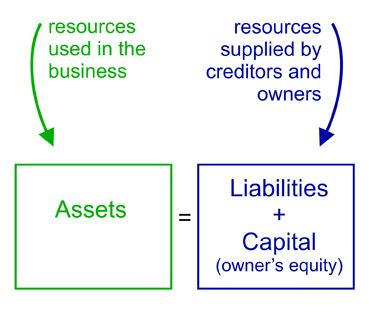
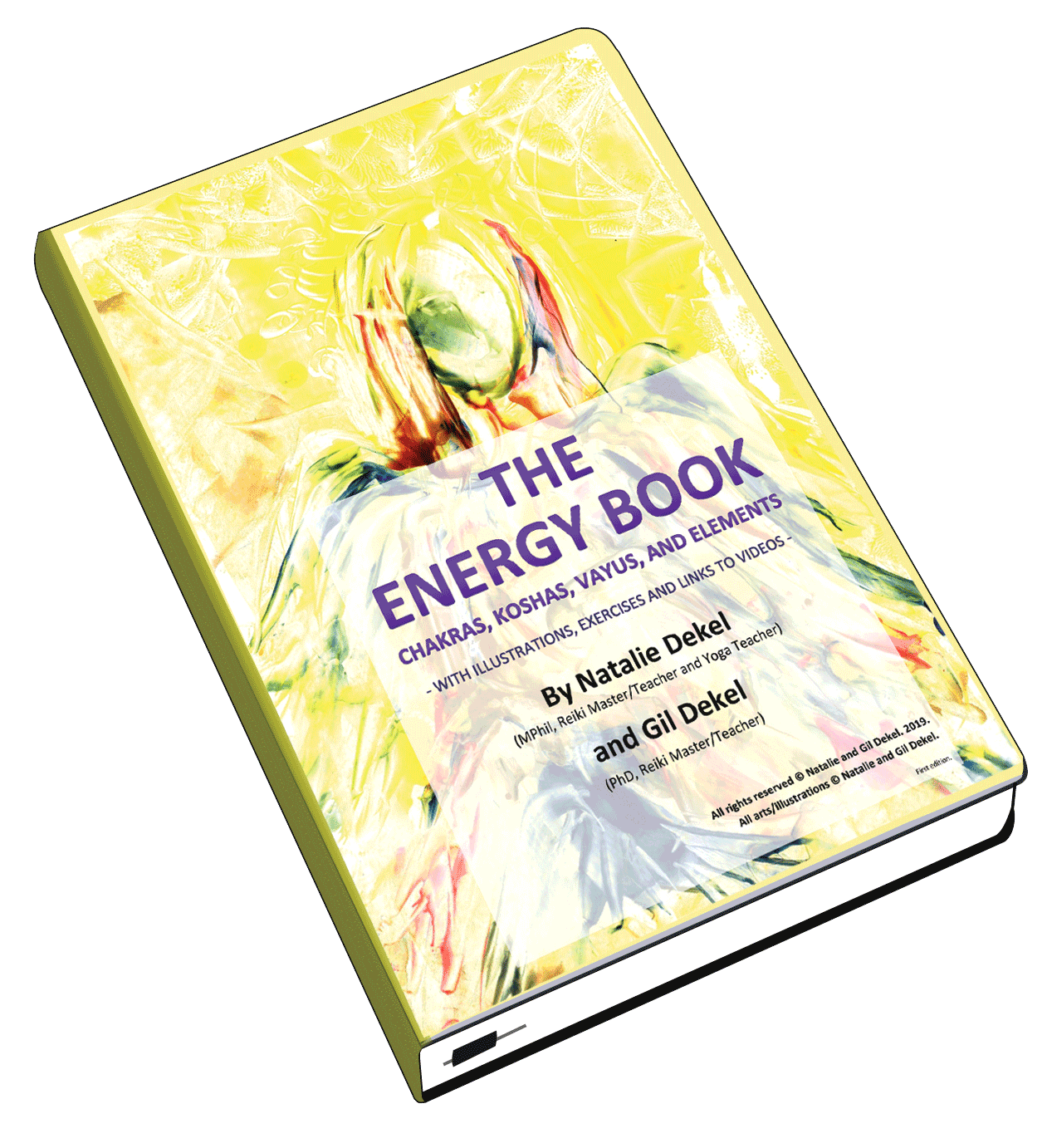
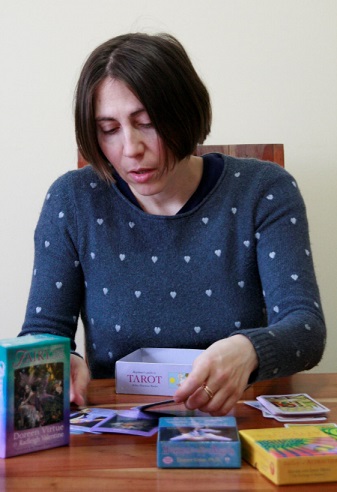 - Reading with Natalie, book here...
- Reading with Natalie, book here...
Great summary — clearly you learnt a lot from this book 🙂